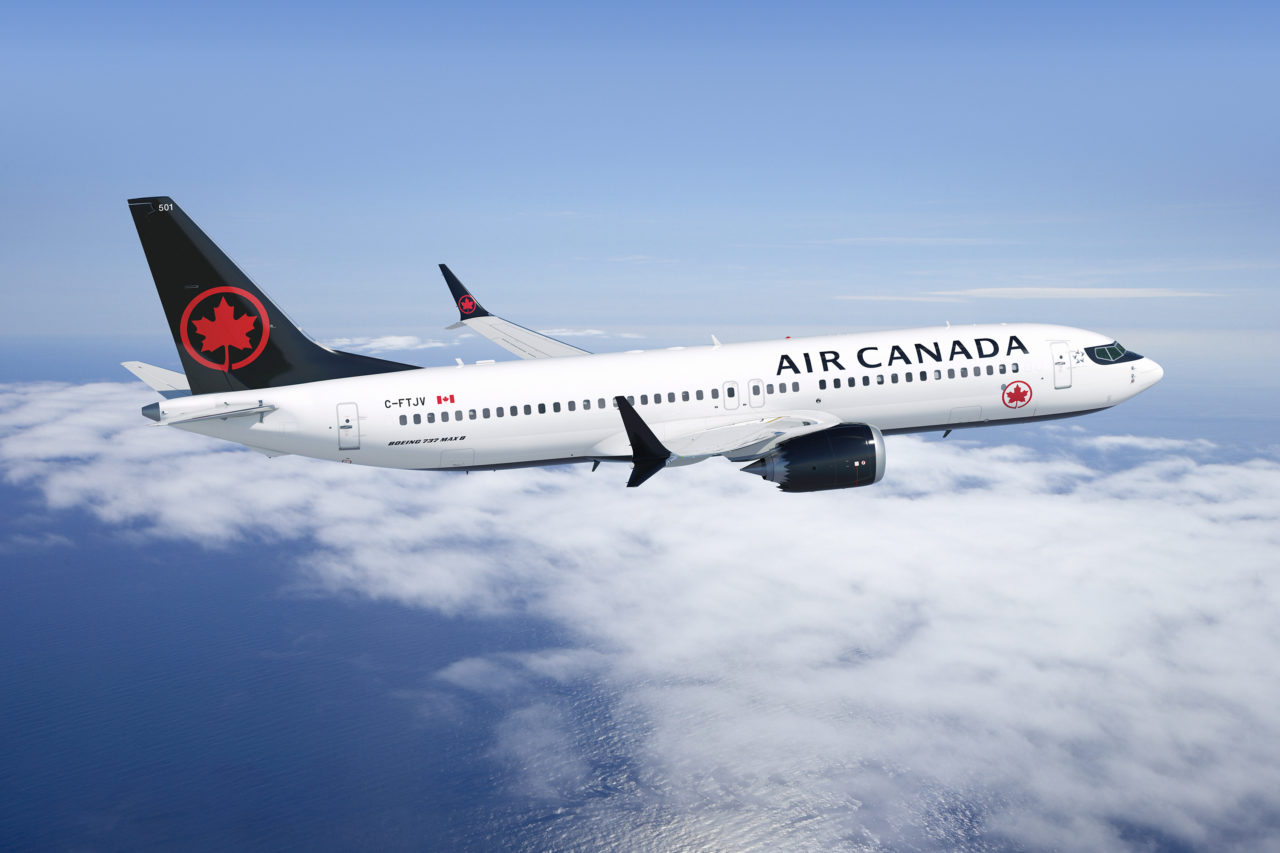
Transport Canada expects to issue a final airworthiness directive (AD) clearing the 737 MAX for return to passenger carrying service in Canadian airspace next month. (Air Canada)
Transport Canada civil aviation regulatory officials have completed their independent design review of changes integrated into the Boeing 737 MAX aircraft, and outlined next steps for the grounded aircraft type’s projected return to Canadian airspace next month, according to a Dec. 17 press release.
Under the validation approval, airlines operating Transport Canada registered 737 MAX aircraft can begin the implementation of Canadian design modifications, while the agency expects to publish an airworthiness directive stipulating the design changes that must be incorporated on Canadian registered aircraft next month. The Canadian agency published background information along with the press release signaling their approval of the design changes to clarify the next steps that need to be completed prior to the return of the 737 MAX to passenger-carrying service in Canada.
“The commercial flight restrictions for the operation of the Boeing 737 MAX aircraft in Canadian airspace remain in effect and will not be lifted until Transport Canada is fully satisfied that all its safety concerns have been addressed, that required modifications have been incorporated, that enhanced flight crew procedures are in place, and that all training has been conducted in Canada,” the agency said in the release.
Similar to the European Union Safety Agency’s 737 MAX approval issued Nov. 24, Transport Canada’s approval of the design changes include different requirements from those featured in the Nov. 18 publishing of the Federal Aviation Administration’s (FAA) AD. While Transport Canada concurs with all provisions included in the FAA version, some key differences in their upcoming AD are “an enhanced flight deck procedure that provides the option for a pilot-in-command to disable a loud and intrusive warning system (commonly called the ‘stick shaker’) when the system has been erroneously activated by a failure in the angle of an attack sensor system,” according to the release.
“This feature will help to reduce pilot workload given what has been learned from the two tragic accidents and has been fully evaluated by Transport Canada’s flight test pilots. There will also be differences in training including training on the enhanced flight deck procedure,” the agency said.
Transport Canada further clarified its reasoning behind including the flight deck feature, stating that the measure will provide pilots with the option to reduce cockpit workload during certain flight conditions.

Transport Canada published its timeline for a return to service of the MAX on Dec. 17. (Transport Canada)
Air Canada, the largest Canadian operator of the 737 MAX, has a total of 24 of the aircraft in its fleet, serving routes across North America, the Caribbean, Hawaii, and Atlantic Canada to London Heathrow. The airline has made a number of changes to its original order for 737 MAX placed in 2014, since the fleet was first grounded last year. Among these changes include cancellations to 10 jets on order and rights to purchase an additional 30 MAX aircraft.
Brazilian low-cost carrier GOL became the first airline to perform a commercial flight on Dec. 9 with the MAX since its grounding in March 2019. While the FAA has already re-certified the MAX, no U.S. airline has performed a passenger-carrying flight with it yet.
Transport Canada expects to issue an interim order outlining required training for 737 MAX flight crews in January prior to publishing a final airworthiness directive.
“While global certification authorities have worked extensively together in the review of this aircraft, the decision to certify/validate an aircraft is one that Canada has taken independently,” the Canadian regulator said. “The differences between the FAA and Transport Canada in procedures and training demonstrate these independent actions.”